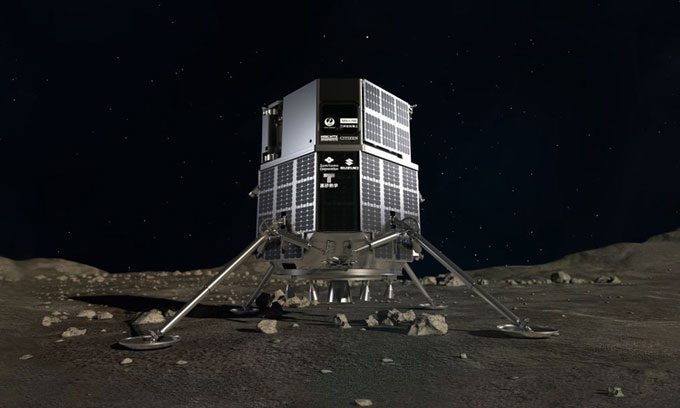The robot has a diameter of 80 mm and weighs only 250 grams, capable of changing shape to operate in the harsh environment of the Moon.
HAKUTO-R Lander from iSpace will carry a robot the size of a baseball from the Japan Aerospace Exploration Agency (JAXA) to the Moon, Space reported on May 27. JAXA will use this robot to take pictures and collect data about lunar dust – a material that poses challenges for both humans and machines when operating on this extraterrestrial terrain.

Simulation of the HAKUTO-R lander landing on the Moon. (Photo: iSpace).
The JAXA robot appears to be the second vehicle on the HAKUTO-R lander, as last month, iSpace announced it would also send Rashid, a robot from the UAE, to the Moon. If successful, Japan and the UAE will become the next two countries to land on this celestial body after the Soviet Union, the United States, and China.
JAXA’s Robot is still in the development phase, and not much information has been disclosed. The agency stated that the spherical robot, with a diameter of 80 mm, can transform and roll on the surface using two wheels. Companies such as Sony, TOMY, and Doshisha University are also involved in the robot’s development.

Compact spherical robot design from JAXA. (Photo: JAXA).
The transforming robot will be extremely compact and lightweight, capable of functioning in the Moon’s harsh environment, according to JAXA. It weighs only about 250 grams, which helps reduce the mass that needs to be transported to the Moon. JAXA also hopes the robot will contribute to future exploration missions of this celestial body.
A representative from iSpace described JAXA’s robot as compact and equipped with two wheels. The company will use the HAKUTO-R lander to monitor the robot’s communication and operation during the lunar surface exploration.
iSpace’s remote communication technology will also support JAXA’s plan to deploy the Lunar Cruiser. The Lunar Cruiser is a large exploration vehicle designed for astronauts, expected to be operational on the Moon by 2029. iSpace may also research technology for autonomous operation and driving.





















































